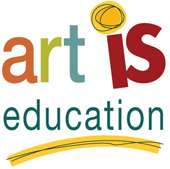
(View Complete Item Description)
NEXT.cc is an eco web that develops ethical imagination and environmental stewardship. NEXT.cc introduces what design is, what design does, and why design is important. It offers activities across nine scales – nano, pattern, object, space, architecture, neighborhood, urban, region, and world. NEXT.cc's journeys introduce activities online, in the classroom, in the community and globally. NEXT.cc journeys and activities are supported with links to museums, institutions and contemporary practices. The eco web network of journeys provides a solid foundation for newly established NAAEE North American Association of Environmental Education standards with place based design activities that address the five goals of environmental education: Awareness, Knowledge, Attitudes and Environmental Ethic, Citizen Action Skills, and Citizen Action Experiences. NEXT.cc is based on Wisconsin Art and Design Standards and Common Core State Standards. NEXT.cc plans to reach young people, their teachers and their families with meaningful learning experiences that create positive influence on lives and outcomes.
Material Type:
Activity/Lab,
Assessment,
Game,
Interactive,
Lesson Plan,
Unit of Study
Author:
Lindsey Shepard




















